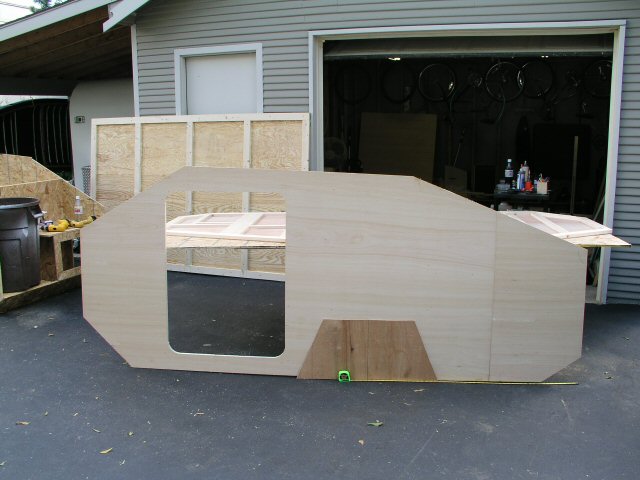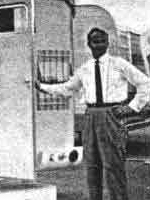I am considering an 11' tear built on a 9' bed. This is because the front and rear foot will curve up and not touch the frame. Do I need to figure my axle placement from the rear of the actual metal trailer, or from the rear of the body?
Many thanks!
Tongue Weight Spreadsheet
37 posts
• Page 1 of 3 • 1, 2, 3
Tongue Weight Spreadsheet
"Better living through reckless experimentation"
http://www.forgottenclassics.com
http://www.forgottenclassics.com
-

Shrug53 - 500 Club
- Posts: 546
- Joined: Tue Jun 08, 2004 9:17 am
I think you need to consider the entire teardrop AND trailer to determine the location of the axle. If you are a high powered mathematician you can calculate the mass of all the objects, derive their combined center of gravity, and then calculate moments of inerita so that you get a final tongue weight of 10%.
Or you can use a simple cut and dried formula that would place the axle at 54.5" from the back of the trailer. I used the cut and dried formula, and it didn't work. I have a tongue that is closer to 20% of the weight of the trailer.
I did take the liberty of doing a quick sketch of an 11' trailer with the wheel at 54.5" from the rear of the trailer (not the frame). Here's how it looks.

It looks okay, but if it works out like mine, you would have an incredibly heavy tongue weight.
The answer...
Build your trailer, and mock up your body on it. The play with axle locations until your tongue weight is where you want it. Then weld on your axle brackets and build the real body.
Look at it this way. You'll almost be in the second teardrop club with your first teardrop!
Mike...
Or you can use a simple cut and dried formula that would place the axle at 54.5" from the back of the trailer. I used the cut and dried formula, and it didn't work. I have a tongue that is closer to 20% of the weight of the trailer.
I did take the liberty of doing a quick sketch of an 11' trailer with the wheel at 54.5" from the rear of the trailer (not the frame). Here's how it looks.

It looks okay, but if it works out like mine, you would have an incredibly heavy tongue weight.
The answer...
Build your trailer, and mock up your body on it. The play with axle locations until your tongue weight is where you want it. Then weld on your axle brackets and build the real body.
Look at it this way. You'll almost be in the second teardrop club with your first teardrop!

Mike...
The quality is remembered long after the price is forgotten, so build your teardrop with the best materials...
-

mikeschn - Site Admin
- Posts: 19202
- Images: 479
- Joined: Tue Apr 13, 2004 11:01 am
- Location: MI


